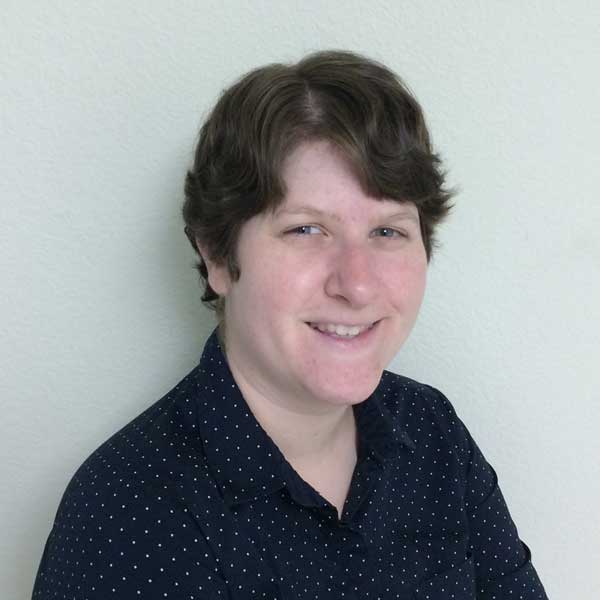Nano and Micro Technologies
Micron-scale 3D contact printing (3DµCP)on HF-free etched glass
(K-428) Micron-scale 3D contact printing (3DµCP) on HF-free etched glass

Viraj Ghosh
BIOE Ph.D Student
Rice University, Department of Bioengineering, Vlassakis Lab
Houston, Texas, United States
Julea Vlassakis, Ph.D.
Assistant Professor
Rice University Department of Bioengineering
Houston, Texas, United States- AT
Amelia Tsai
Undergraduate Researcher
Rice University, United States
Presenting Author(s)
Primary Investigator(s)
Co-Author(s)
Microcontact printing (µCP) is a widely-used technique for patterning biomolecules that uses molded polydimethylsiloxane (PDMS) elastomer stamps coated with bio-ink.1 Use cases for µCP and variations include biofunctionalization, biomolecular arraying, and cell-motility restriction.2–4 However, its 2D limitations restricts potential uses, particularly for 3D cell immobilization and high-through flow-based single molecule force microscopy. Recently, 3DµCP methods have emerged, but they require specialized substrates that limit printable biomolecules.5,6
We present a novel 3DµCP method that addresses those limitations by etching micron-scale features into glass substrates. Our process first uses electron beam lithography to pattern a chromium-coated polymethylmethacrylate (PMMA) resist layer on the glass surface. Then, reactive ion etching (RIE) treatment with CF4 etches microchannels into the glass substrate. A subsequent O2 RIE treatment removes excess PMMA and restores the now-fluorinated surface to native silicon dioxide. We successfully show micron-scale and larger adsorption of human albumin on non-etched areas through planar contact printing.
Unlike other 3DµCP methods, our method is generalizable with most µCP and passivation protocols, which are typically designed for use on glass slides. Furthermore, glass-cleaning protocols enable frequent re-use. Our method avoids using highly dangerous hydrofluoric acid, a more common glass etchant.7 We also present an alternate variation that does not use chromium etchant but requires further optimization for full pattern fidelity.
Altogether, our method provides a versatile, safe, and straightforward 3DµCP approach, broadening potential µCP applications.
Materials and Methods::
Patterning and Etching Glass Substrates
The overall workflow is shown in Fig 1a. Hand-diced glass slides (VWR, ~18x25x1 mm) were spin-coated (Laurell Tech WS-650) with ~1-2 mL of 495 PMMA A11 (Kayaku AM) to an approximate thickness of 2.3 microns and prebaked at 180 °C for 90 seconds. A thin ~5 nm anti-charging chromium layer was sputter-coated (AJA ATC Orion sputter system) at 30s and 100W onto the PMMA layer. A 10 nA electron beam (Elionix ELS-G100) at 15x15 pitch, 0.0675 µsec/dot, and dose energy of 1200 µC/cm2 exposed the pattern, which was designed in Klayout (Fig 1b). Cr etchant (15s, room temp) removed the Cr layer. Alternatively, a brief CF4 RIE (Oxford Plasmalab System 100/ICP 180) treatment (5 minutes, 30 sccm, 225 W) can remove the Cr layer, but at the cost of some pattern fidelity. After Cr removal, PMMA was developed using 3:1 IPA:DI for 60 seconds, followed by a post-bake at 100 °C for 90 seconds. Finally, the substrate underwent CF4 (60 minutes, 20 sccm, 225 W) and O2 (5 minutes, 30 sccm, 225 W) RIE treatments.
Contact Printing:
A ~5 mm2 planar PDMS stamp was sonicated with 1:3 IPA:DI for 9 minutes, rinsed with ethanol, blown dry with N2 (30s) and inked for 30 minutes with 0.5 mg/mL of human albumin conjugated with fluorescein (Rockland Chemicals). The stamp was wicked off with a Kimwipe, washed in 1x PBS, DI H2O, and air-dried. It was pressed to the substrate for 30 seconds.
Results, Conclusions, and Discussions::
We first conducted a dose-optimization of 495 PMMA A11 from 400-1600 µC/cm2, assessing visual hallmarks of over- and under-exposure through SEM imaging. A high, 15x15 pitch was chosen to reduce processing time. After one hour of CF4 etching, profilometry showed 1.6 microns of PMMA resist remaining, indicating that several more hours of etching were possible. At this stage, fluorescent microscopy of human albumin prints showed no protein adsorption. Protein adsorption was restored after a 5-minute O2 treatment. We also investigated RIE etching to remove the anti-charging chromium layer; this created “lightning-bolt”-shaped cracks around exposed areas and requires further optimization.
Two glass slide fragments were patterned over 2 cm2 with nine copies of the pattern shown in Fig 1b. The pattern contained Rice owls (3–12 µm line-widths) and 0.5-5-µm2 microposts. Stylus profilometry (Bruker DektakXT) showed feature depths between 40 and 60 nm. Brightfield microscopy showed feature size (Fig 1c). Sample one maintained pattern fidelity for all owls. Sample two had features within 5-10 microns of each other merge, indicating partial overexposure or overdevelopment. In both samples, over 80% of 5 µm microposts and over 50% of 2 µm microposts were present. We were visually unable to quantify size differences between the etched pit and the glass surface, indicating anisotropic etching. After contact printing, fluorescent imaging showed adsorption of human albumin to unetched areas of the stamp (Fig 1d).
Further optimization will include etch-rate tests with different process gasses (e.g., SF6, C4F8, CF4/O2) to increase SiO2/PMMA selectivity, allowing greater feature depth. Long-term storage and reuse will be assessed, and optimizing development will enable sub-micron features.
In conclusion, we demonstrate a straightforward and safe 3DµCP method capable of micron-scale patterning. Unlike many other µCP methods, ours has no feature-density limitations and a large theoretical maximum print area ( >6 sq. in).1 Furthermore, using glass enables combinatorial printing with most other µCP protocols. Key new applications include complex-patterned microchannels, 3D cell immobilization, and high-through single molecule force spectroscopy.
Fig 1: a) Process workflow b) Pattern (Klayout) c) Brightfield imaging of glass features (4x and 10x) d) Fluorescent imaging post-print (4x and 20x)
Acknowledgements (Optional): : This work was done in part using resources of the Shared Equipment Authority at Rice University (https://research.rice.edu/sea/). We thank Jing Guo, Carlos Gramajo, and Tim Gilheart for their generous help.
References (Optional): :
1. Delamarche, E., Pereiro, I., Kashyap, A. & Kaigala, G. V. Biopatterning: The Art of Patterning Biomolecules on Surfaces. Langmuir 37, 9637–9651 (2021).
2. Rozkiewicz, D. I. et al. Covalent Microcontact Printing of Proteins for Cell Patterning. Chemistry – A European Journal 12, 6290–6297 (2006).
3. Foncy, J. et al. Fabrication of Biomolecule Microarrays for Cell Immobilization Using Automated Microcontact Printing. in Cell-Based Microarrays: Methods and Protocols (eds. Ertl, P. & Rothbauer, M.) 83–95 (Springer, 2018). doi:10.1007/978-1-4939-7792-5_7.
4. De Vlaminck, I. et al. Highly Parallel Magnetic Tweezers by Targeted DNA Tethering. Nano Lett. 11, 5489–5493 (2011).
5. Borowiec, J. et al. 3D Microcontact Printing for Combined Chemical and Topographical Patterning on Porous Cell Culture Membrane. ACS Appl. Mater. Interfaces 10, 22857–22865 (2018).
6. Jambhulkar, S. et al. Aligned Ti3C2Tx MXene for 3D Micropatterning via Additive Manufacturing. ACS Nano 15, 12057–12068 (2021).
7. Shubhava et al. Chemical etching of glasses in hydrofluoric Acid: A brief review. Materials Today: Proceedings 55, 46–51 (2022).
